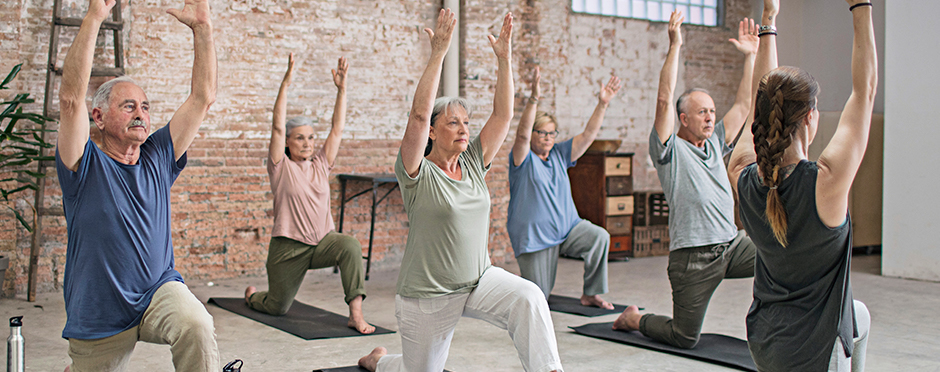
Can Exercise Help with Arthritis Pain?
1 CommentOsteoarthritis (OA) is the most common type of arthritis.1 The degenerative joint disease is due to a breakdown of cartilage. Arthritis can occur in many joints including the hands, hips, knees, lower back, neck and shoulders.
OA can cause pain, swelling and stiffness in joints. OA is a chronic condition and occurs over time as the cartilage in the joints wears away. OA is frequently associated with older age, but can start in your 20s or 30s.2 Due to the symptoms of OA, physical activity can become more difficult but exercise can actually help alleviate some of these symptoms.
How can exercise help improve symptoms of arthritis?
Exercise can help to improve joint pain and improve range of motion. The key to working out when you have OA is to select exercises that you can do comfortably and perform consistently. One of the most effective ways to reduce the pressure placed on your joints, especially those in the lower extremity, is to maintain a healthy weight. With each pound of excess weight lost, there is a four-fold decrease in the load on your joints.3
Oftentimes, OA joint pain can make high impact activities, such as running, too painful. However there are low impact activities that are great options, including biking, swimming or walking. Those with joint pain may also see benefits from varying their routine – such as walking one day and switching to swimming the next day – to avoid joint overuse from repetition. It is important to note that it is recommended to consult with your doctor before starting a new workout routine or trying new exercises.
Tips for Exercising with Osteoarthritis
- Yoga or Tai Chi
- These activities can help improve balance and strengthen muscles that support the hip and knee joints.
- Aquatic Classes
- Exercising in water is great for those with moderate to severe OA pain. The water provides buoyancy and therefore less stress on the joints. The water is also usually warm which can help improve joint mobility.
- Stretching
- Stretching can help improve joint range of motion and relieve tight muscles that may be limiting joint range. Stretching should be performed both prior to and following a workout. Read, “Warming Up vs Cooling Down: Things to Know” to learn more about the benefits of stretching before and after activity.
- Go Slow, Move Gentle
- Exercise with slow and easy movements, and also move gently to warm your joints up. Performing range of motion exercises for 10 minutes is a great way to start a workout prior to progressing to aerobic or strengthening exercises. If you feel pain, take a break or back off.
- Heat Before and Ice After
- Heat can help relax the joints and muscles and can help you begin your workouts. Applying ice after a workout can help alleviate soreness and potential swelling in joints following activity.
Be Consistent
Keep in mind that a lack of exercise can actually make joints even more painful and stiff. When you do not exercise, the muscles that support your joints are weaker and can cause more stress on your joints. Remember to trust your body and do not push your joints too far. Easing into a new routine and progressing slowly with intensity and duration is key. If you would like more guidance for workouts with arthritis, please find your local Athletico to request an appointment. Appointments are available in-clinic or online.
The Athletico blog is an educational resource written by Athletico employees. Athletico bloggers are licensed professionals who abide by the code of ethics outlined by their respective professional associations. The content published in blog posts represents the opinion of the individual author based on their expertise and experience. The content provided in this blog is for informational purposes only, does not constitute medical advice and should not be relied on for making personal health decisions.
1. “Arthritis.” Centers for Disease Control and Prevention, Centers for Disease Control and Prevention, 3 Apr. 2018, cdc.gov/arthritis/basics/osteoarthritis.htm.
2. “Osteoarthritis Causes.” arthritis.org, www.arthritis.org/about-arthritis/types/osteoarthritis/causes.php.
3. Messier, Stephen P., et al. “Weight Loss Reduces Knee‐Joint Loads in Overweight and Obese Older Adults with Knee Osteoarthritis.” Freshwater Biology, Wiley/Blackwell (10.1111), 28 June 2005, onlinelibrary.wiley.com/doi/full/10.1002/art.21139.

1 Comment
Linda Battaglin
Thank you for news letter😊